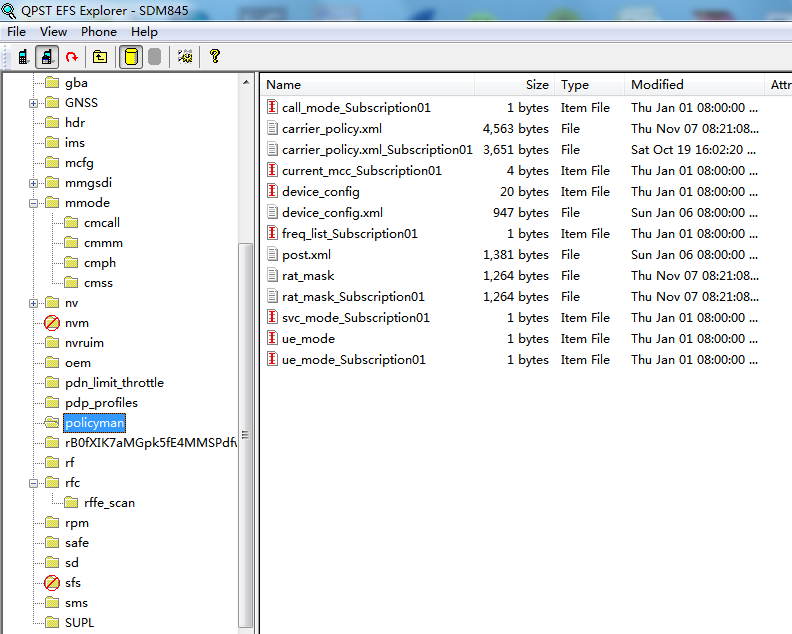

It means really, Motorola could not sell the Moto Maxx (XT1225) in Puerto Rico (U.S.

Motorola also promises it has the SAME HARDWARE (including antenna) that the Droid Turbo (XT1254) has (even though the Droid Turbo has a different FCC ID number):
Qxdm certificate nv software#
FCC certification - only software change. That means there's been no hardware change since U.S. And as it's being sold in Puerto Rico (U.S. Which means the LTE bands they now claim (2, 3, 4, 7, 17) are also probably correct.Īgain this phone has the SAME FCC ID NUMBER. QPST confirms the 2G/3G bands Motorola now claims for this phone: They disabled LTE band 5 (a minor AT&T LTE band), and enabled LTE band 3 (which is used more in Latin America countries). When this phone was being tested by the FCC, it had these LTE bands:īut now being sold as the Moto Maxx (SAME FCC ID number), Motorola enabled more GSM bands and changed one of the LTE bands. Motorola re-purposed this phone as the Verizon Droid Turbo (XT1254) in the USA and as the Moto Maxx (XT1225) now being sold in a handful of Latin America countries. In fact it was being tested by Google to be the Nexus 6 (or a Nexus 6 variant) as late as mid-August - but Google decided to go with the larger size variant and only the larger size variant. I have 5.2" 1440p, 3GB RAM Moto Maxx (XT1225), which has Snapdragon 805 - same as the (Motorola) Nexus 6. It's at the bottom of this post, but I am putting a lot of information about my phone first, so you know the whole situation. So, how can I trust the calculator to give me correct values for additional bands I wish to enable? Your NV calculator values do not match the NV value of the LTE bands my phone already has. I found a discrepancy in your calculator. Use to calculate Qualcomm NV items for adding GSM / WCDMA / LTE bands.ĭo you want to add any GSM / WCDMA / LTE bands to your phone? Then use this app to calculate all needed NV items.


 0 kommentar(er)
0 kommentar(er)
